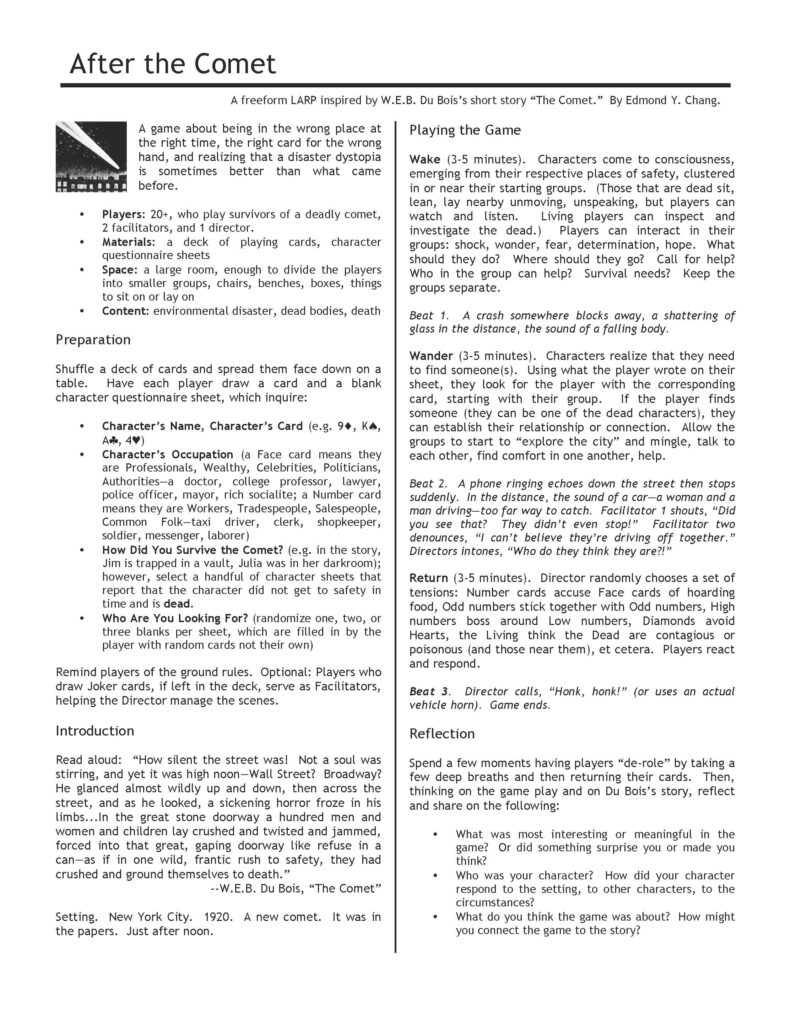This spring semester, I am again teaching ENG 1100: Crossing Culture with Text, a gen ed course that satisfies both humanities and diversity and practice requirements. My previous versions of the class focused on speculative literature from around the world and speculative literatures and games of color. This time, this term, I wanted to do something different, mix it up, and try my hand at using freeform live-action role-playing (LARP) games in class. The course description for my “Literature as LARP as Literature” course reads,
LITERATURE, it is said, lets a reader to “walk a mile” in another’s shoes. Literature, it is said, teaches a reader to empathize, to try to understand another’s perspectives, experiences, and struggles before judging them. And literature, it is said, allows a reader to see themselves in a story, to find characters and circumstances “relatable.” Other mediums, like film or television or games, evince similar assertions. However, who gets to read, watch, or play with such correspondence, mobility, and freedom? More importantly, who is not afforded these same investments, connections, or identifications? And how might we read, watch, or play without assuming a story, world, or experience is about or for us? Drawing on literature, scholarship, live-action role-playing games, and popular culture, this course will introduce students to intercultural texts through the interdisciplinary lenses of feminist, queer, performance, and game studies. Through these texts, foregrounding authors and artists of color, we will engage questions of race, gender, sexuality, class, ability, and other identities and embodiments. We will explore alternative ways to read, analyze, and write about literature that do not rely only on identification and “relatability.” We will also engage, adapt, and “play” literature as/for “empathy” games, experiential learning, even bystander intervention.
One of the main assignments, paired with a more general presentation, requires students in small groups to adapt what we are reading into a freeform LARP that does not put players into problematic roles or positions or identities. The assignment prompt reads,
As previously outlined, understanding a text can come from close reading, from discussion, and from presenting the work to others. Now, we are going to add yet another mode of exploring a text—this time through play, specifically through LARP. According Evan Torner, classrooms can use “embodied fiction, or live-action role-play (LARP), to adapt and teach film and literature…the act of physically enacting characters in a classroom grants students access to unique perspectives on characters’ motivations and decision trees, as well as what might be described as the ‘system’ of a particular narrative work.” However, Torner cautions, adapting literature into a LARP requires careful planning, thoughtful design, and attention to text and context. He continues, “Beyond simply reading character parts aloud, role-play that uses situational improvisation, a shared fictional space, and in-character activities aids students in understanding character motivations and how they fit into their social context.”
Therefore, in the same group for your Critical Question Presentation and Roundtable, you will work as a team to design a simple, short, self-contained “freeform” LARP based on the week’s readings. As with your presentation, your LARP must make connections between the story, the scholarship, and the main ideas, questions, keywords, and critiques of the text(s) at hand. According to Lizzie Stark, a “freeform” LARP is a live-action role-playing game that “mixes LARP and tabletop techniques”; it is generally story-oriented, focused, short (“one shot”), live or semi-live, rules-light, and often with transparent mechanics or meta-play. For our purposes, your freeform LARP is more than just assigning roles, scripts, and scenes to be acted out like a stage play. You must think about how to adapt your story, novel, or narrative into playable form:
To get things started, I designed the first freeform LARP based on W.E.B. Du Bois’s short story “The Comet.” In the story, New York City is decimated by a strange comet that passes near the Earth; its gases kill nearly all of the inhabitants of the city. The only two people left alive are a working-class Black man named Jim and a rich, white woman named Julia. The two must come to grips with the fact that they are the only humans left, and they must grapple with their prejudices, fears, and growing intimacies in the face of an apocalypse. My freeform LARP takes place during the action of the story, just after the passage of the comet. Players are other people who have some how survived, and they must figure out what to do even as Jim and Julia’s story plays out in the distant background. Hopefully it all goes well.
Here are the materials from the day:
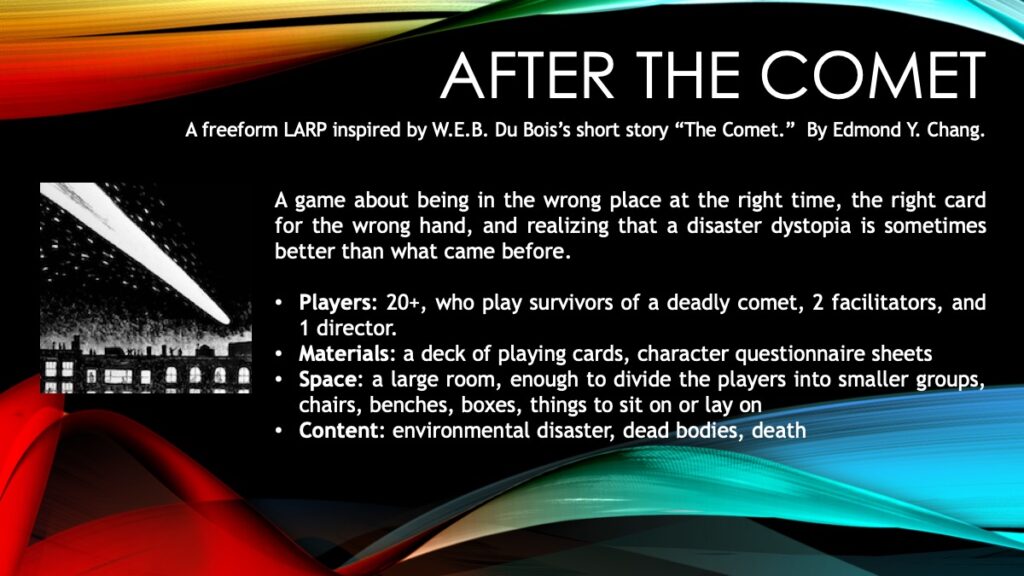
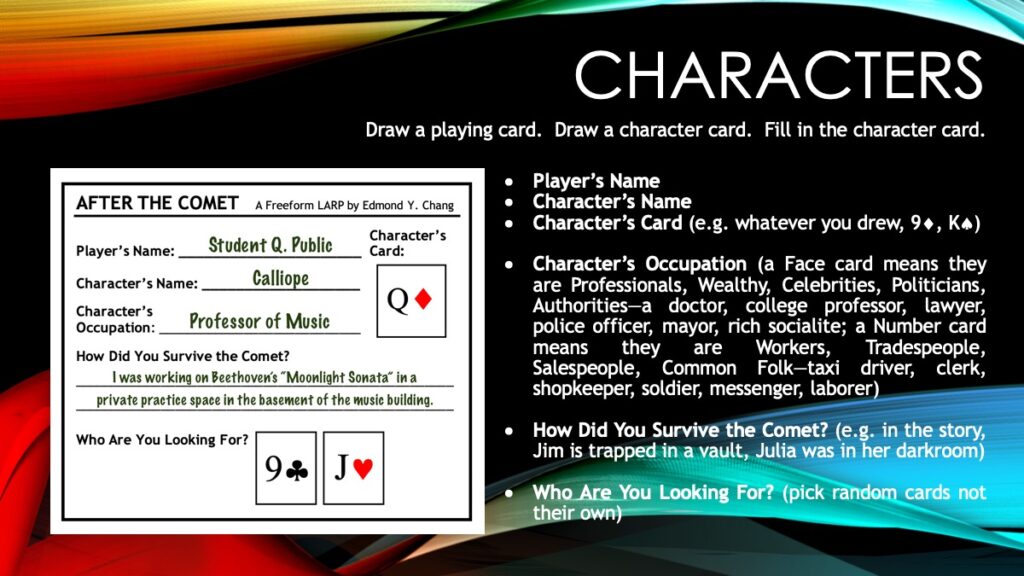
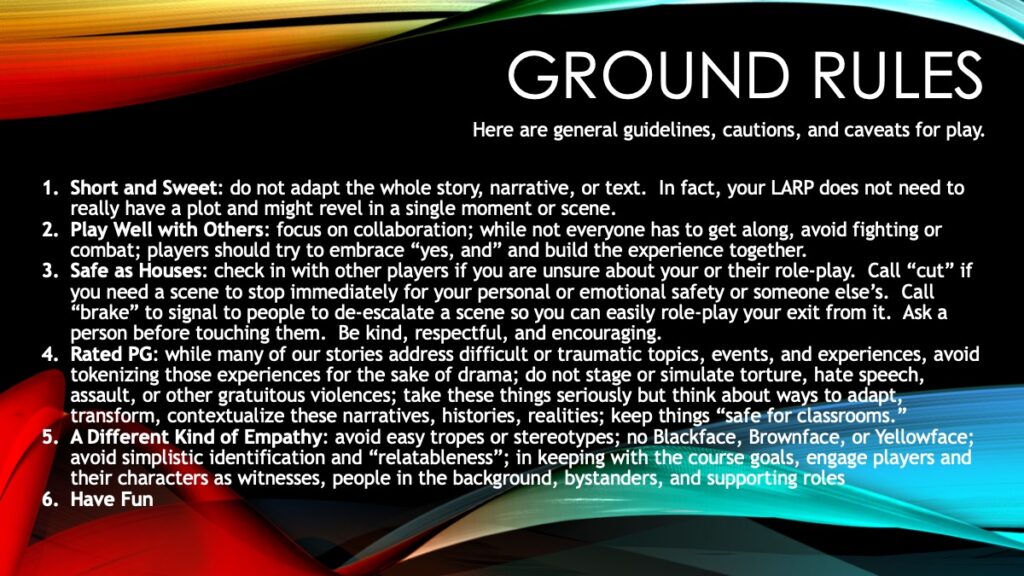
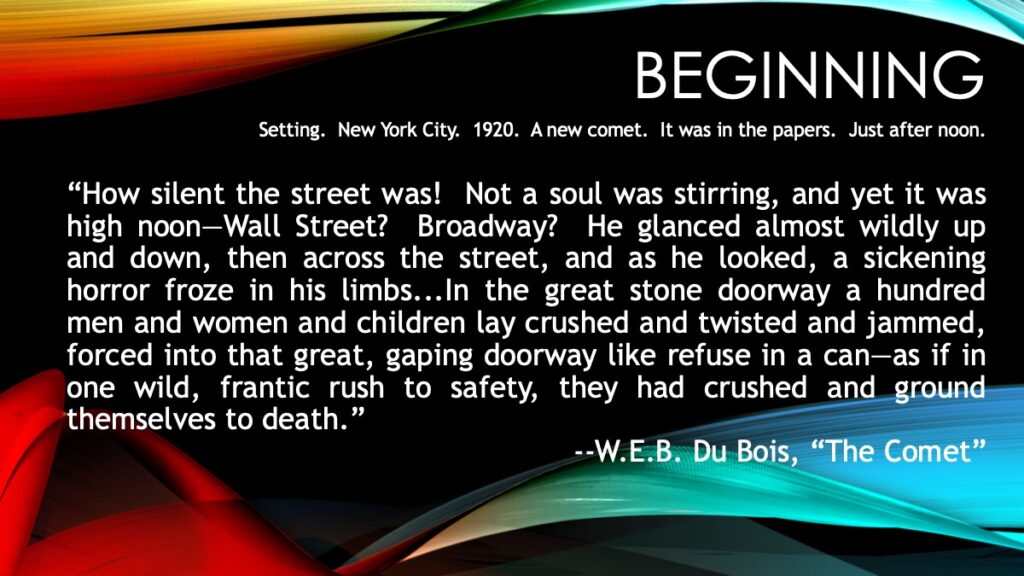
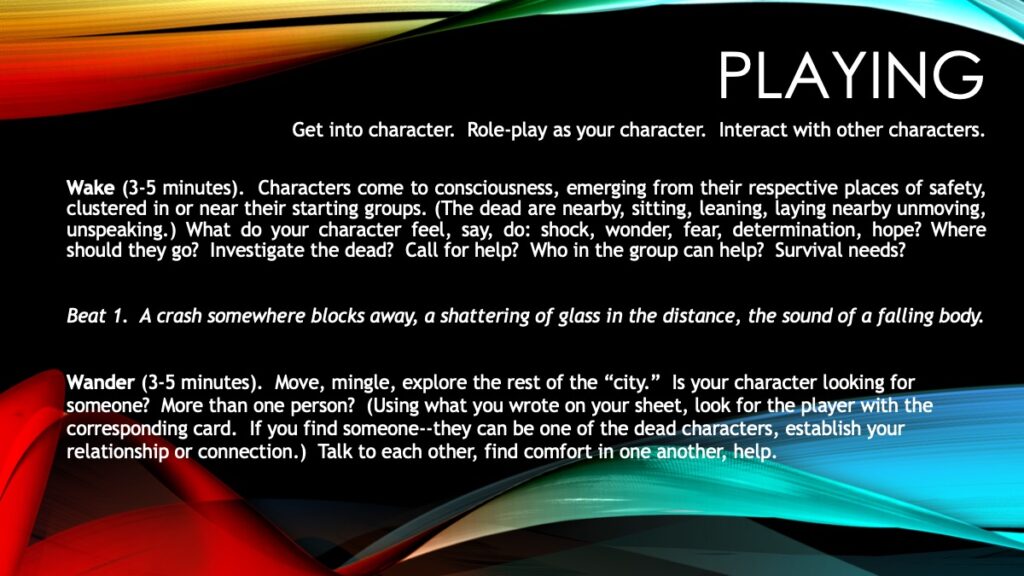
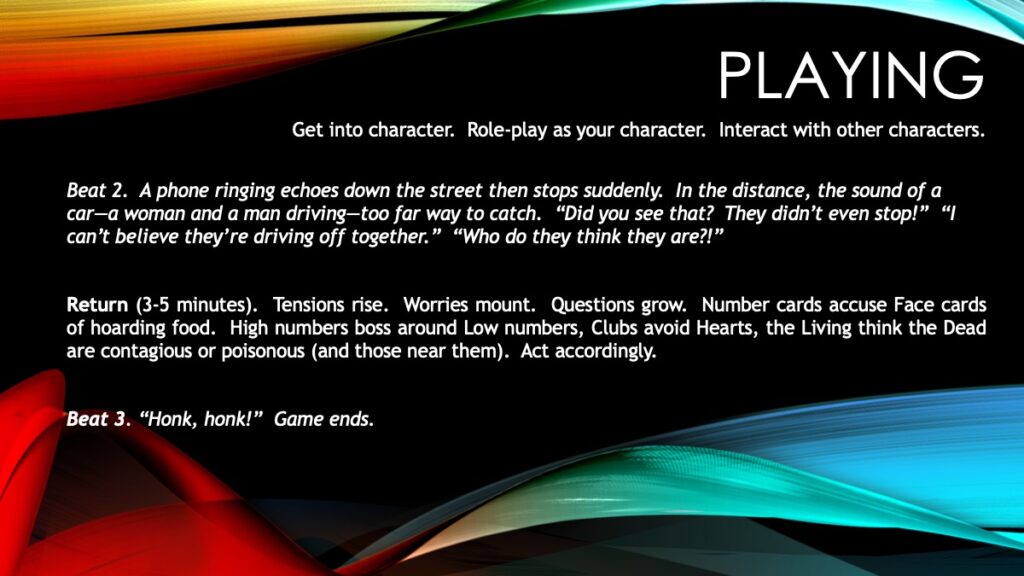
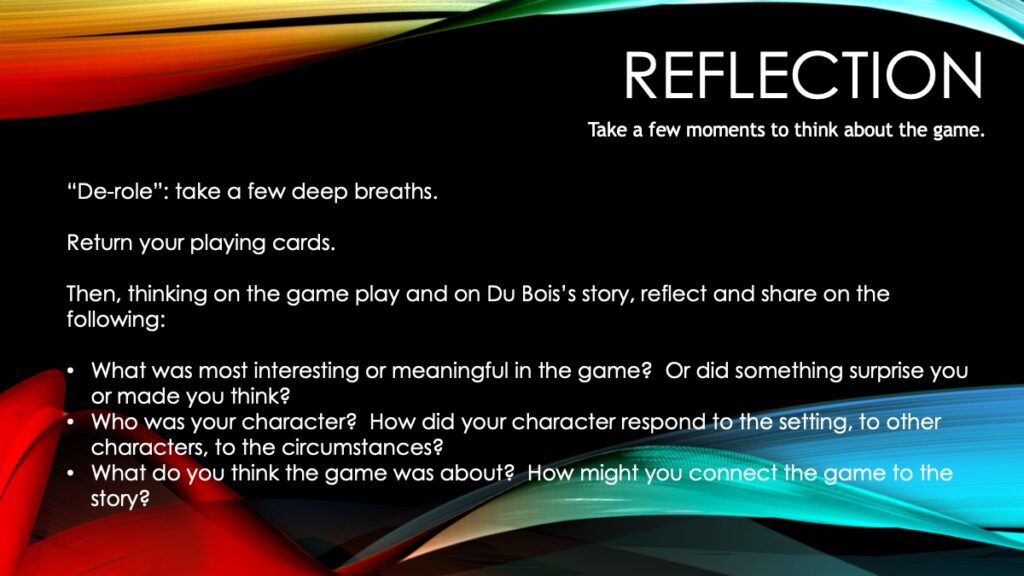
Here’s the rules and game play handout:
